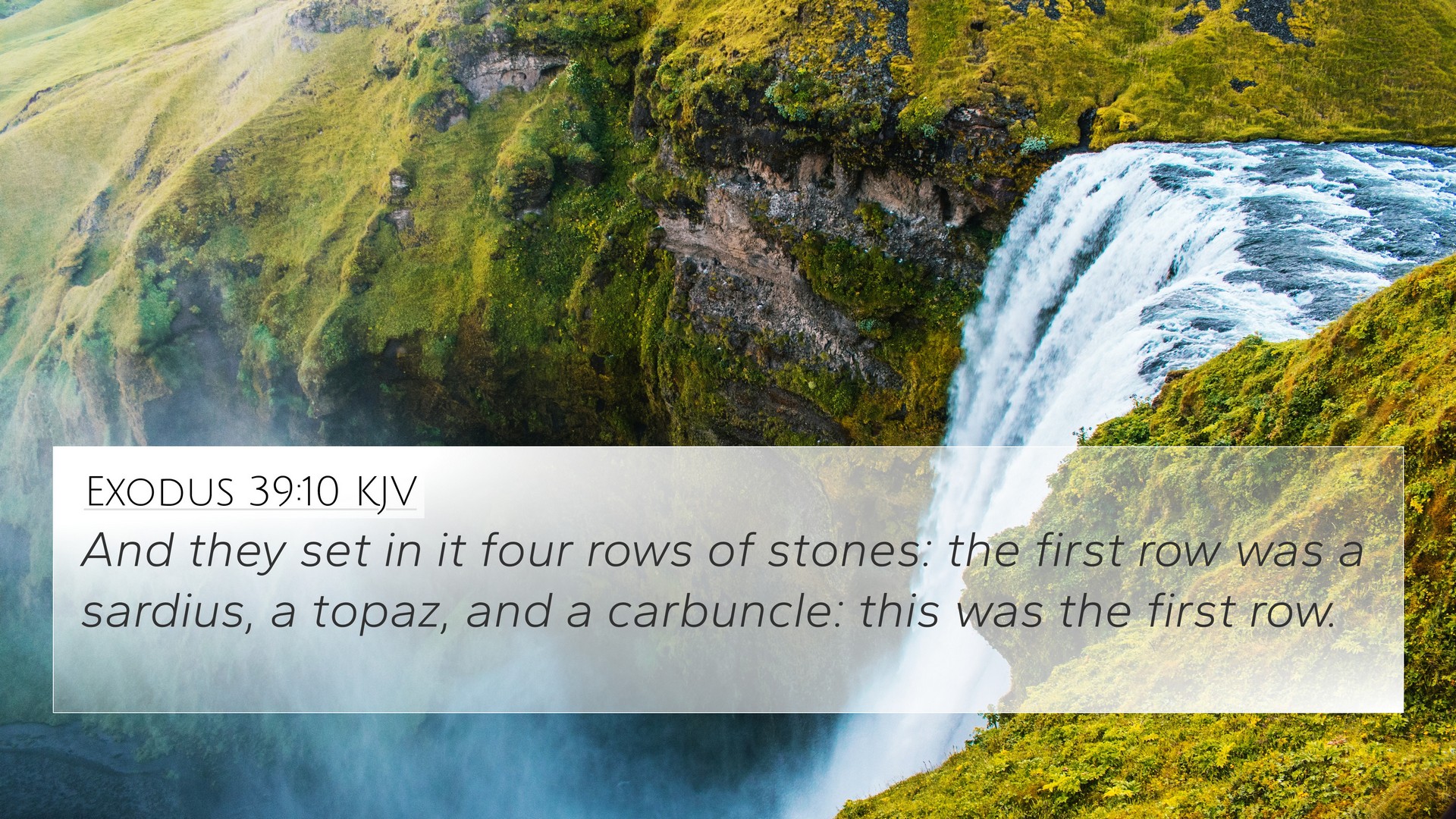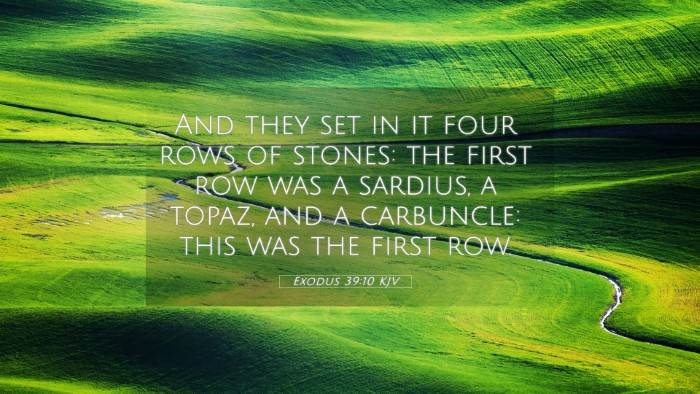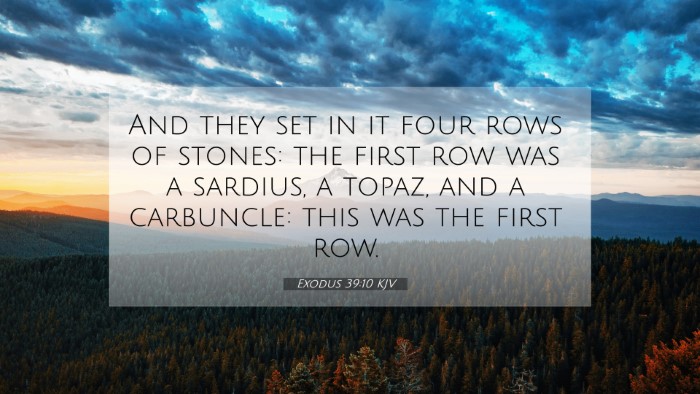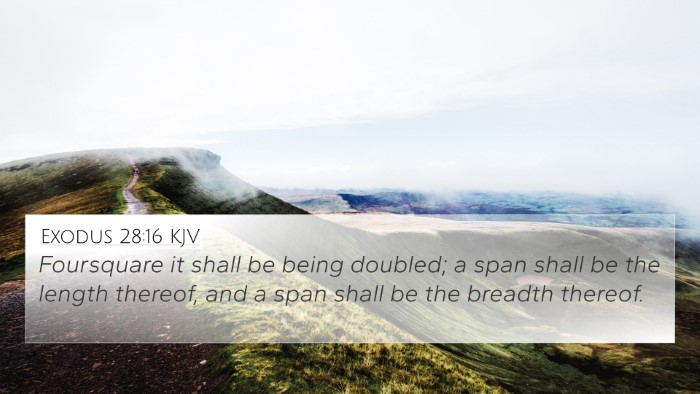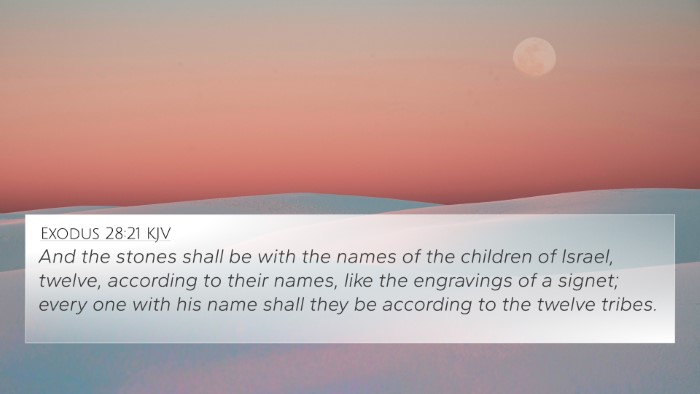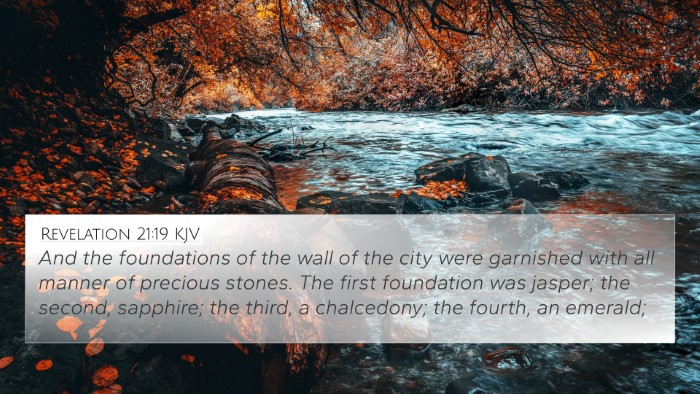Understanding Exodus 39:10
Exodus 39:10 states, "And they set in it four rows of stones; a row of a sardius, a topaz, and a carbuncle: this was the first row."
This verse is part of the detailed description of the priestly garments made for Aaron, the high priest of Israel. The focus here is on the stones set in the breastplate, which held significant meaning both symbolically and culturally within the context of the Israelites.
Symbolic Significance of the Stones
The stones mentioned in this verse are part of a larger symbolic system within the Israelite practices. Each stone represented one of the twelve tribes of Israel. The selection of specific gemstones in the breastplate served not only an aesthetic function but also represented the connection between God and His chosen people. According to public domain commentaries:
- Matthew Henry emphasizes the importance of the high priest's role as a mediator between God and the Israelites, highlighting that the stones symbolize a connection to each tribe's significance.
- Albert Barnes notes that the colors and types of stones reflect the beauty and glory of God's creation, intended to be used in worship, and expressing the collective identity of Israel.
- Adam Clarke further suggests that the ornate nature of the priestly garments, including the breastplate, exemplifies God's holiness and the necessity of approaching Him with reverence.
Connections to Other Biblical Texts
Exodus 39:10 serves as a vital link in understanding the broader narrative of Scripture and its themes. Here are some important cross-references that connect with this verse:
- Exodus 28:15-21 - The detailed instructions for the construction of the breastplate.
- Revelation 21:19-20 - The New Jerusalem's foundations, which echo the symbolism of precious stones.
- 1 Peter 2:9 - The concept of believers as a chosen people can be seen parallel to the chosen tribes of Israel.
- Isaiah 54:11 - A reference to God’s beauty and the favored people, reflecting the glory represented in the breastplate.
- Hebrews 5:1 - Discusses the role of the high priest, linking it back to their garments and duties in Exodus.
- Matthew 5:14 - Light of the world theme echoes the priestly role of revealing God to His people.
- John 17:20-23 - Jesus' prayer for unity links to the symbolism of the stones uniting the tribes.
Thematic Bible Verse Connections
Analyzing Exodus 39:10 in context enables a deeper understanding of various themes in Scripture. The breastplate, adorned with precious stones, can be seen as a representation of various Biblical themes:
- Representation - Just as the stones represent the tribes, so do believers represent Christ on Earth.
- Unity - The combining of different stones symbolizes the unity of the Church as one body with many parts.
- Holiness - The adornment highlights God's standards of holiness, reflecting the call for believers to live set-apart lives.
- Honor - The high priest's garments show how God honors His servants, paralleling how God honors those who serve Him today.
Cross-Referencing Biblical Texts
For effective Bible study, cross-referencing texts provides deeper insights. Here are tools and methods to assist in cross-referencing:
- Utilize a Bible concordance to locate verses with similar themes or keywords.
- Employ a Bible cross-reference guide for connecting verses efficiently.
- Examine cross-reference Bible studies to delve into specific narratives or teachings.
- Consider using Bible reference resources for comprehensive studies.
- Learn about Bible chain references to follow thematic threads throughout the Scriptures.
Practical Application
Understanding the significance of Exodus 39:10 aids in prayer and worship. Here are some practical applications:
- When approaching God in prayer, remember the high priest's role in facilitating access to God.
- Reflect on the unity of the body of Christ and our connections with one another and with God.
- Incorporate a theme of holiness and reverence in personal worship inspired by the sacred garments.
